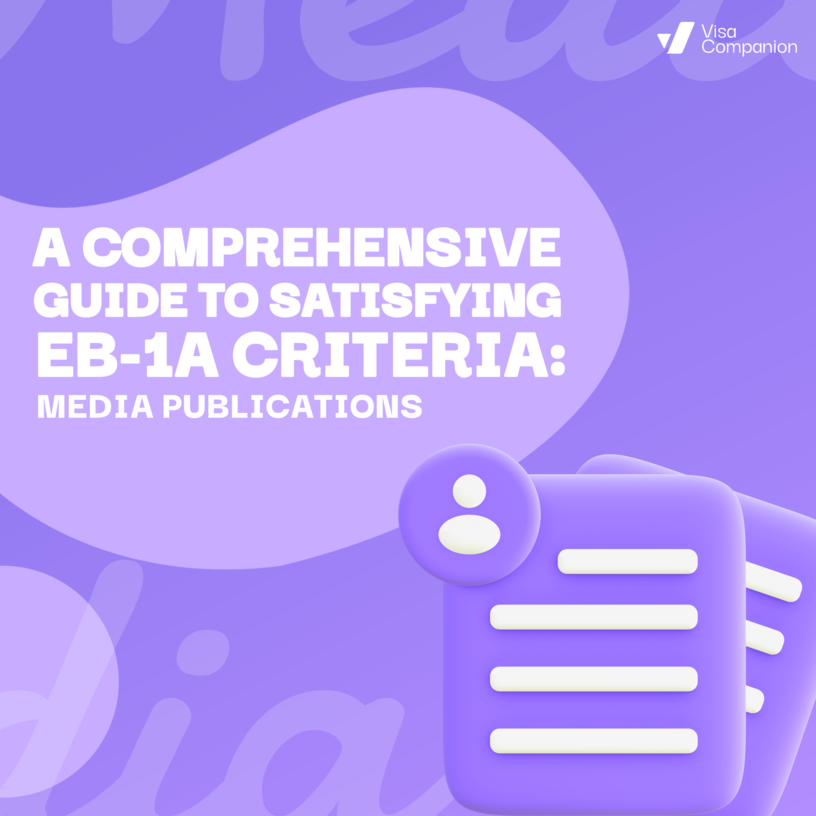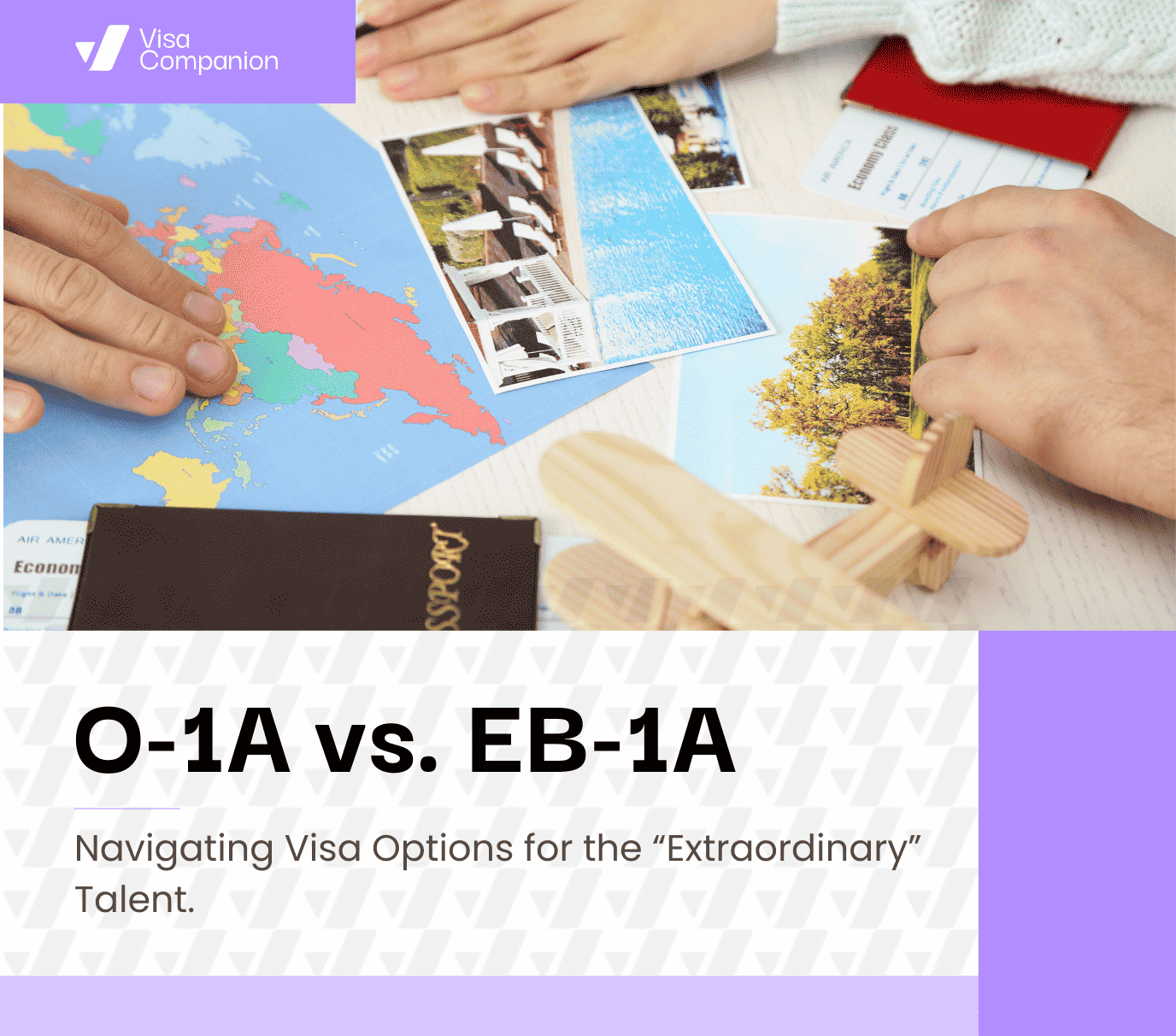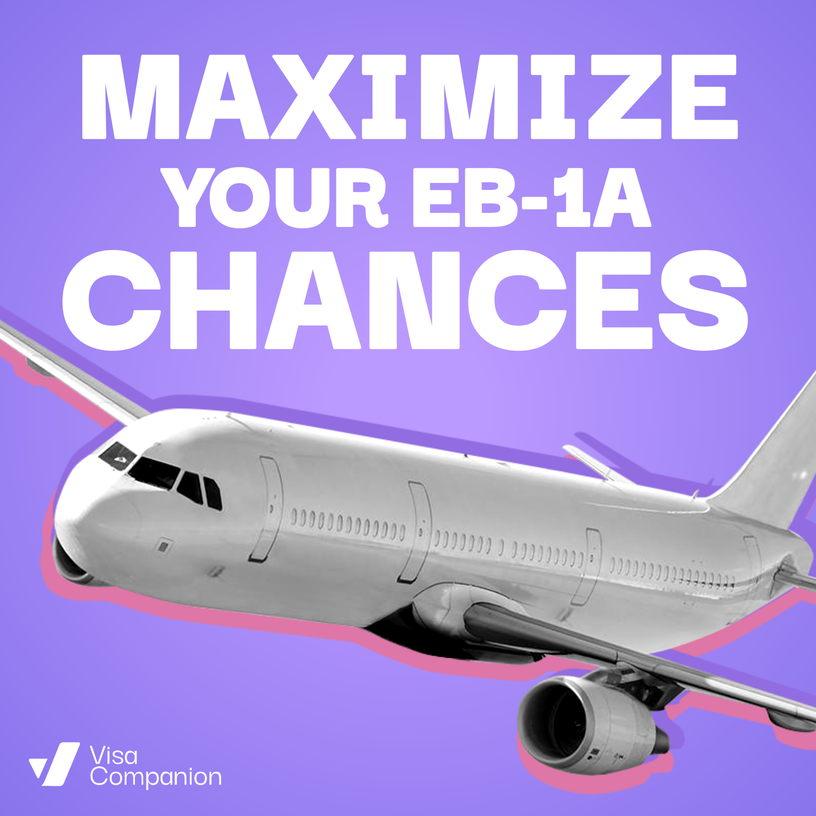A COMPREHENSIVE GUIDE TO SATISFYING EB-1A CRITERIA: MEDIA PUBLICATIONS

A COMPREHENSIVE GUIDE TO SATISFYING EB-1A CRITERIA: MEDIA PUBLICATIONS.
The EB-1A visa classification is reserved for individuals with extraordinary ability in their field. To qualify, petitioners must provide evidence of recognition in their area of expertise. Among the criteria for establishing extraordinary ability, a significant requirement is the media publication about the applicant.
Here, we will provide a comprehensive guide to satisfy the EB-1A Media Publications, considering the specific requirements set by USCIS.
EB 1A Criteria: Published Media Material About the Person in Professional, or Major Media Relating to the Person's Work in the Field.
The Media Publications criterion is designed to evaluate whether the applicant's work and contributions have garnered public attention through reputable publications. The focus is on third-party recognition of the applicant’s achievements, as reflected in articles, interviews, or features published in professional or major media outlets.
What does USCIS Look For:
- Relevance of the Published Material to the Applicant’s Work: USCIS requires that the published material be directly related to the applicant and their specific work in the field. Publications that solely focus on the employer, organization, or general industry trends may not meet this requirement unless they explicitly highlight the applicant’s contributions.
- Publication Standards: The material should appear in professional publications, major trade publications, or widely recognized media outlets. The quality, credibility, and readership of the publication are key factors in evaluating its significance.
- Third-Party Content: The material must be created independently by third parties, which means self-authored press releases, promotional content, or paid media do not qualify. USCIS is interested in objective coverage that provides genuine recognition of the applicant’s contributions.
How do you Satisfy the Media Publications Criterion?
- Identify Relevant Publications:
Start by gathering all media publications where your work has been discussed. This can include:
- Print and online articles in newspapers or magazines.
- Features in professional journals or major industry publications.
- Audio or video recordings of interviews, discussions, or mentions in radio and TV programs.
For example, If you are an AI researcher, articles in leading technology magazines that feature your research breakthroughs or interviews with you about AI innovation would be ideal.
- Showcase the Impact:
Provide details that demonstrate the significance of the publication, such as:
- Circulation and Readership Data: This helps establish the reach and impact of the publication. For example, if a newspaper has millions of readers, it would show the widespread recognition of your work.
- Viewership and Listenership Stats: For audio or video content, include viewership metrics or listener statistics from platforms like YouTube, podcasts, or radio shows.
- Submit Verifiable Documentation:
Provide physical or digital copies of the articles, including title pages, the table of contents, and the sections that mention you or your work, the name of the editor who wrote about your work and the date the article was written. If submitting video or audio material, include transcripts with clear references to your contributions.
- Avoid Promotional Content:
Avoid submitting marketing materials, paid content, or press releases. USCIS generally does not consider these to be objective recognition of your contributions.
- Include Rankings and Awards:
If the publication in which you are featured has received awards or ranks highly among similar outlets, provide evidence of this. Recognition of the media outlet enhances the credibility of the coverage.
By carefully selecting and presenting the right evidence, you can effectively satisfy the media publications criterion.
For further information, you can reach us at admin@visacompanion.ai.
Related Blogs

Navigating EB2-NIW and EB-1A Visa Timelines: Strategies for Efficient Processing
June 2, 2023Understanding the processing times for EB2-NIW (National Interest Waiver) and EB-1A (Extraordinary Ability) visas is crucial for applicants aspiring to obtain these U.S. employment-based preference visas.

O-1A vs. EB-1A: Navigating Visa Options for the "Extraordinary" Talent
April 22, 2023Explore the differences between the O-1A and EB-1A visas for talented individuals immigrating to the US. Learn about the temporary, sponsored O-1A visa versus the permanent, self-petitioning EB-1A option. Gain clarity on which visa aligns best with your goals.

EB1A: Are You a Leader in Your Field?
Sept 09, 2024Understanding whether you qualify for the EB-1A visa can be challenging, particularly when assessing if you have played a leading or critical role in a distinguished organization. This blog post aims to provide you with clear tools and insights to help evaluate and demonstrate your eligibility under this specific criterion, ensuring you present a compelling case to USCIS adjudicators.

Maximize Your EB-1A Chances: Evaluate Your Memberships
Sept 19, 2024The goal of this post is to help you assess whether you can argue that you meet the second of the ten EB-1A criteria: holding a membership in an association that demands outstanding achievement from its members.